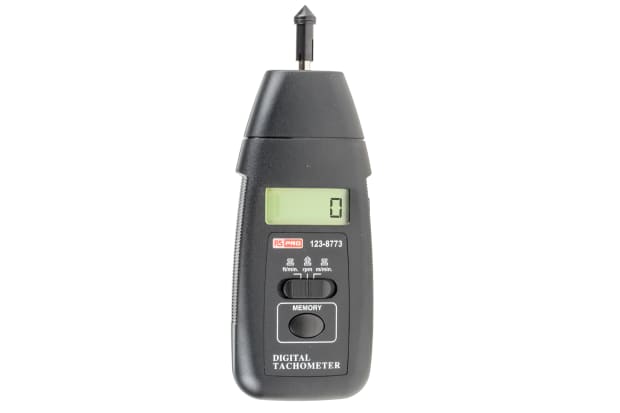Unlocking the Secrets of Tachometers: Everything You Need to Learn About This Vital Tool in Your Lorry
Recognizing the details of tachometers can give useful insights into your lorry's efficiency and maintenance demands. From determining engine speed to understanding the data it presents, tachometers function as a critical tool for vehicle proprietors and lovers alike. By deciphering the mysteries behind this crucial tool, you can unlock a wide range of info that can enhance your driving experience and make certain the durability of your car.
Importance of Tachometers
The relevance of tachometers depends on their capacity to supply essential real-time information regarding an engine's rotational rate, enabling precise surveillance and maintenance of equipment. By measuring the changes per minute (RPM) of an engine's crankshaft, tachometers supply important understandings into the engine's efficiency - tachometer. This data is crucial for guaranteeing that the engine runs within its optimal array, avoiding possible damage from over-revving or underperforming
Tachometers play a crucial duty in assisting drivers and specialists find any abnormalities in the engine's rate, which could suggest concerns such as fuel ineffectiveness, mechanical troubles, or excessive stress on the engine. By without delay identifying these problems via tachometer readings, maintenance can be done proactively, preventing costly repair services and downtime over time.
Furthermore, tachometers are especially critical in high-performance vehicles and machinery, where exact control over engine rate is essential for optimal operation. Racing automobiles, airplane, and commercial tools count on tachometers to deliver peak performance while maintaining security requirements. Fundamentally, tachometers are not simply tools for gauging rate yet indispensable tools for ensuring the smooth and efficient operation of engines across various applications.
How Tachometers Measure Engine Speed
Utilizing sensing units that discover the frequency of electric pulses produced by the engine's ignition system, tachometers accurately gauge the rotational speed of an engine. By keeping track of the price at which these pulses are gotten, tachometers provide real-time responses on exactly how fast the engine's crankshaft is revolving per minute, generally referred to as revolutions per min (RPM)
The tachometer's sensor, commonly connected to the engine's ignition coil or ignition system cables, gets the electrical signals generated each time a cylinder fires. These signals are after that converted right into RPM readings presented on the gauge or tool cluster within the motorist's view. Tachometers can be analog or electronic, with modern-day automobiles commonly featuring electronic displays for specific and instant RPM analyses.
This information is important for drivers to comprehend the engine's efficiency, prevent over-revving, enhance equipment shifting, and make sure reliable fuel usage. By properly measuring engine rate, wikipedia reference tachometers play an essential role in assisting vehicle drivers operate their cars securely and successfully.
Interpreting Tachometer Readings
Having a clear understanding of how tachometers gauge engine speed sets the structure for successfully translating the RPM readings presented. Translating tachometer readings is crucial for optimum car performance and engine wellness. When the engine is idling, the tachometer needle normally rests around 600-1000 RPM, depending on the vehicle.


Tips for Making Use Of Tachometers Successfully
To enhance driving performance and enhance engine efficiency, what secret strategies can be carried out for effectively making use of tachometers? Tachometers are essential devices that offer real-time responses on engine speed, making it possible for chauffeurs to make enlightened decisions for much better efficiency - tachometer. Here are some pointers for using tachometers efficiently:
Recognizing Optimal RPM Variety: Acquaint yourself with the ideal RPM (Changes Per Minute) variety for your lorry. This range ranges various automobiles and is generally indicated in the owner's handbook. Maintaining the engine within this range can improve fuel performance and lengthen the engine's lifespan.
Shifting Gears at the Right Time: Utilize the tachometer to establish the most effective time to shift gears. Upshifting too early or far too late can result in reduced effectiveness and performance. Goal to move equipments when the RPM reaches the ideal variety for the next gear.
Keeping An Eye On Engine Anxiety: High RPMs for long term durations can strain the engine. Keep an eye on the tachometer to stop over-revving, especially during velocity or when lugging hefty tons.
Tachometers and Car Maintenance
When thinking about vehicle upkeep, tachometers play an essential duty in keeping track of engine efficiency and discovering possible problems. Tachometers give vital information on engine speed, permitting drivers and technicians to ensure that the engine is running within the recommended RPM variety.
In enhancement to discovering possible issues, tachometers can likewise assist in optimizing fuel performance. By keeping the engine speed within the optimum range, chauffeurs can boost their gas mileage and reduce fuel usage. This not just benefits the chauffeur's budget yet also adds to ecological preservation by lowering damaging exhausts.
Verdict

Comments on “Tachometer Acquiring Overview: Attributes to Seek and Ideal Brand names”